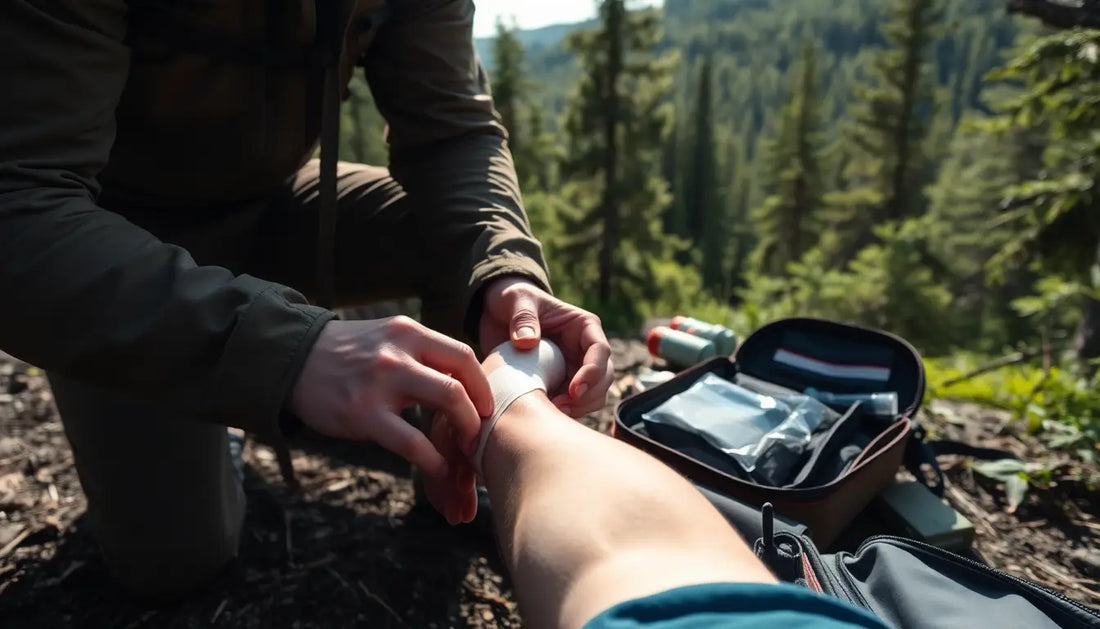
First Aid in the Outdoors: A Comprehensive Guide to Treating Injuries
TF AdventureOutdoor adventures can be exhilarating, but they also come with their fair share of risks. Whether you're hiking, camping, or engaging in any other outdoor activity, the possibility of injuries or medical emergencies is always present. That's why it's crucial to be prepared with a solid understanding of wilderness first aid.
In this comprehensive guide, we'll explore the essential skills and knowledge you need to provide effective first aid in the great outdoors. From treating cuts and scrapes to managing more serious injuries, we'll cover a wide range of topics to help you stay safe and confident in any situation.
Preparing for Emergencies
Before we dive into the specifics of first aid, it's important to ensure that you're prepared for any potential emergencies. This means packing a well-stocked first aid kit, familiarizing yourself with its contents, and knowing how to use the various items.
Your first aid kit should include a variety of essential items, such as bandages, antiseptic wipes, gauze pads, scissors, tweezers, and any necessary medications. It's also a good idea to include items like splints, tourniquets, and emergency blankets, as they can be invaluable in more serious situations.
Additionally, it's crucial to have a basic understanding of first aid principles and techniques. Consider taking a wilderness first aid course or refreshing your knowledge through online resources and training materials.
Treating Common Injuries
One of the most common types of injuries you may encounter in the outdoors is cuts and scrapes. These can range from minor scratches to more serious lacerations. The key to treating these injuries is to clean the wound thoroughly, apply an antiseptic, and cover it with a clean bandage.
If the bleeding is significant, you may need to apply direct pressure to the wound using a clean cloth or bandage. In some cases, you may need to use a tourniquet to control severe bleeding, but this should only be done as a last resort.
Another common injury is sprains and strains. These can occur when you twist or overextend a joint, such as an ankle or wrist. The first step in treating these injuries is to immobilize the affected area using a splint or bandage. You can also apply ice to reduce swelling and pain.
Blisters are another common issue that can arise during outdoor activities. To treat blisters, you should clean the area, apply an antiseptic, and cover the blister with a sterile bandage. Avoid popping the blister, as this can increase the risk of infection.
Managing More Serious Injuries
While cuts, scrapes, and sprains are relatively common, you may also encounter more serious injuries in the outdoors. These can include fractures, dislocations, and even life-threatening conditions like hypothermia or heat exhaustion.
In the case of a suspected fracture, it's important to immobilize the affected limb using a splint or other stabilizing device. This will help prevent further injury and reduce the risk of complications.
If someone is experiencing symptoms of hypothermia, such as shivering, confusion, or drowsiness, you'll need to take immediate action to warm them up. This may involve removing wet clothing, providing insulation, and administering warm fluids or other heat sources.
Similarly, if someone is showing signs of heat exhaustion or heat stroke, such as dizziness, nausea, or a high body temperature, you'll need to move them to a cool, shaded area and provide fluids and other cooling measures.
Psychological First Aid
While physical injuries are often the primary concern in outdoor emergencies, it's important to also consider the psychological impact of these situations. Traumatic events, such as accidents or medical emergencies, can be incredibly stressful and overwhelming for both the injured person and those providing assistance.
Psychological first aid involves providing emotional support and practical assistance to help individuals cope with the immediate aftermath of a traumatic event. This may include listening actively, validating their feelings, and providing reassurance and comfort.
It's also important to be aware of the potential for post-traumatic stress disorder (PTSD) and other mental health issues that can arise following a traumatic incident. If you suspect someone is experiencing significant psychological distress, it's important to seek professional help or refer them to appropriate resources.
Conclusion
Outdoor adventures can be incredibly rewarding, but they also come with inherent risks. By being prepared with a solid understanding of wilderness first aid, you can help ensure that you and your fellow adventurers stay safe and healthy, no matter what challenges you may face.
Remember, the key to effective first aid in the outdoors is to remain calm, assess the situation, and take the appropriate actions to stabilize and care for the injured person. With the right knowledge and equipment, you can be a valuable asset in any emergency situation.
So, whether you're planning a day hike or a multi-day backpacking trip, make sure to prioritize your first aid knowledge and preparedness. It could just make the difference between a minor setback and a life-threatening emergency.
Happy and safe adventuring!

